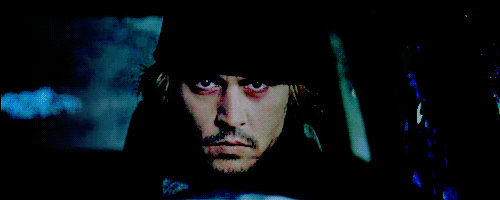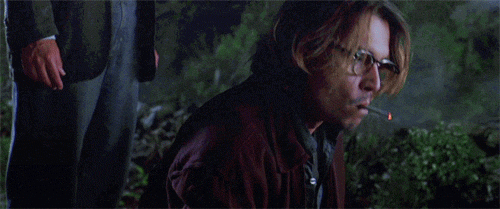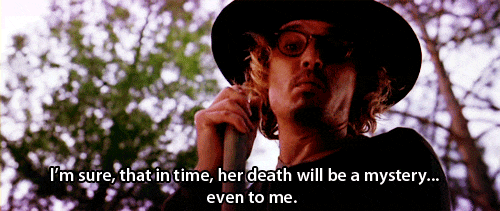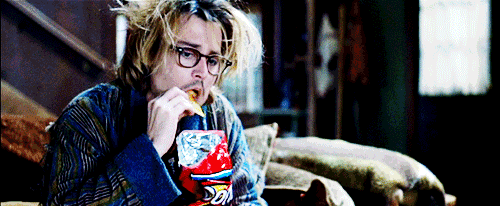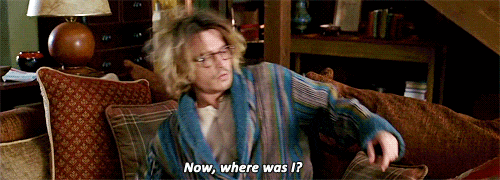*SPOILER ALERT*
Imagine having a disorder where it is as if you are sharing your body with more than just one person- more than just one mind.
Formerly known as multiple, or split, personality disorder, Dissociative Identity Disorder is exactly the problem Morton Rainey was struggling with. Director David Koepp portrays this disorder through Johnny Depp’s character, Mort, in the psychological thriller that is Secret Window. A psychological thriller is a story that emphasizes the psychology of its characters and their unstable emotional states. This is exactly how one would describe the movie. The disorder identified in this film is exaggerated in a way that keeps the viewer guessing at the edge of their seats. However, the question is, what exactly is Dissociative Identity Disorder, and how accurately is it portrayed in the movie?
Dissociative Identity Disorder, or DID, is characterized as a dissociative disorder and is generally defined as two or more distinct identities that take control of the behavior of the client diagnosed. It is quite a rare disorder. It is said to affect around just 1% of the population. The majority of those diagnosed with DID, are females, and researchers are also noticing trauma such as sexual abuse is a common theme in these individuals. Some evidence has suggested chronicity, but the idea of genetic transmission is an unresolved question. Onset occurs in childhood usually, but it is not usually recognized as it looks similar to one using their imagination or having some imaginary friends. DID can also seem similar to pathological possession. If possession is part of a recognized and accepted religious practice, the individual will likely not be diagnosed with Dissociative Identity Disorder even if there are persistent symptoms (Morrison).
There are many symptoms of the disorder. Most often an individual with DID has a dominant personality or identity and one or more secondary ones. In most cases of the disorder, the clients experience similar patterns, according to “The New Harvard Guide to Women's Health”. “Typically the primary personality is conventional, conservative, moralistic, sickly, and ‘good,’ while a secondary personality is uninhibited, playful, irresponsible, healthy, and ‘bad.’” (Dissociative). The article states, “There may be many other personalities as well, sometimes including one personality who knows about all of the others. Whereas the primary personality tends not to be aware of the secondary personality, the secondary personality not only knows about the primary but frequently ridicules it or undermines it. The primary personality may, however, hear voices telling it to behave in ways it considers inappropriate” (Dissociative).
Some of these symptoms are certainly clear to see in the movie Secret Window. The director, David Koepp, shows Dissociative Identity Disorder from the perspective of the man facing it, Morton Rainey. At the start of the movie, Mort is an author suffering from writer's block while in the middle of a rough divorce from his wife Amy. The exact details of the reasoning for her affair,
-and the quality of him as a husband, are unclear.
However, what becomes quite clear is that the details of his marriage, divorce, and career should be the least of his worries when he is found by a man named John Shooter, played by actor John Turturro.
Shooter is a characterized as an angry, reckless, and psychotic maniac. He introduces himself as a small time, southern writer. He expresses his discontent when he abruptly shows up, banging on the door of Mort’s remote getaway cabin which has become his permanent residence since splitting up with Amy. Shooter exclaims that Mort has somehow stolen the story that he wrote. Mort dismisses John Shooter, assuming that he is just an obsessed fan, or a mentally unstable person, or something along those lines. He soon would realize, however, that ignoring these accusations is not a wise move. Eventually, Shooter becomes increasingly vicious in his quest for retribution.
What starts out as seemingly empty threats, turns into criminal actions from Shooter as the movie follows Mort’s struggle to prove his innocence of the plagiarism he is accused of. Mort decides to hire a private investigator because he is not sure that he is safe as he does not know what he is dealing with. Shooter’s verbal threats led to vandalism. Vandalism leads to the murder of Mort’s dog Chico. As these encounters between Shooter and Mort become more intense, so do the acts of violence committed by Shooter. After killing Mort’s dog he threatens to attack his soon to be ex wife Amy as well. Shooter then proceeds to burn down the house that they once shared. Though no one is hurt in the fire, Mort continues to grow more and more desperate for a resolution between himself and Shooter.
Shooter agrees to turn himself in if Morton can show him the magazine that he claims his story was published in before John even wrote his story- which is strikingly similar to the one in question. Before Mort can obtain the magazine, Shooter manages to kill the private investigator and the supposed witness that Mort had brought into the situation because they would only “get in the way of (their) business” as John said. Left alone to hide the evidence Mort pushes the vehicle, containing the dead bodies, off a cliff and into the water. He does this because the weapons the men were killed with, were items belonging to Mort himself. He assumes everything will work out once the magazine arrives in the mail. He leaves to pick up his package when it finally arrives all while trying to avoid suspicious folks such as the sheriff. Upon arriving at his house he realizes that the section containing his story has been cut out. All of a sudden nothing makes sense. Mort has continued to grow increasingly confused, even to the point that he questions his sanity.
The scenes that follow are the ones that provide the viewers with the inside scoop of the situation that Mort is truly facing. In disbelief, Mort searches for answers as he observes the hat that Shooter left in his car somehow. The internal conflict Mort has is portrayed by showing him having a conversation out loud with the many “Morton Raineys” that surround him.
They tell him he's crazy and that he's a criminal and he knows it. His world is turned upside down and the physical evidence of Shooter’s existence- the bruises he left on Mort’s arms- disappears. This is the point that Morton Rainey realizes that there is no John Shooter. He is simply a figment of his imagination. When Shooter appears Mort ask what it is that he wants. Shooter responds by saying, “my ending, I want you to fix it”.
As the pieces come together, Mort’s concerned ex-wife to be arrives at the cabin. She enters the house and Mort is nowhere in sight. The house is a wreck and she only grows more worried for her former husband. In search for Mort she goes upstairs. Frightened by the sudden appearance of who she thinks is her husband, she tries to understand what has been going on. The man next to her looks like Mort but is certainly not him. He says to her that Mort is dead and that he is here to take care of some unfinished business. John Shooter “fixes the end of the story” by murdering Mort's ex wife.
The movie leaves off on a different note. Mort’s personality has changed completely. He no longer is being controlled by Shooter, but he is suddenly more energized and happier than he had been throughout the movie. Even his writer's block is cured. He presents himself and behaves in a way he hadn’t before.
This makes it easy to diagnose Mort with Dissociative Identity Disorder. He meets the criteria perfectly. The first criteria that must be met is that the presentation of two or more distinct personalities must present, and each must have their own way of being. This is clearly happening in this film. Morton Rainey and John Shooter are both very real and very different people. Amnesia is the second requirement. This also takes place. Technically, Mort was the one to commit the murders and the crime of burning down Amy’s house, even though he had no recollection of it.
The third piece of criteria to be met in order to diagnose one with DID, is an individual must be distressed by the disorder or have an impaired ability to function in a major area of life as a result. I would certainly say that this is true of Morton Rainey.
If someone is committing murders and other violent crimes, I would say that their ability to function socially is impaired. Finally, these disturbances are not a normal part of a broadly accepted cultural or religious practice. Therefore no religion can disprove the fact that Mort suffers from Dissociative Identity Disorder.
It is very clear that Johnny Depp’s character in the film has Dissociative Identity Disorder. There is no doubt about it. However, this is not a common case. Obviously not every person who suffers from this disorder is a deranged murderer. I believe this story can influence viewers to believe that people with DID are dangerous people and people who cannot be trusted. This is simply not the case. In fact, many people with the disorder are high functioning, model citizens. Dissociative Identity Disorder, formerly known as split and multi personality disorder, is extremely complex and mysterious. This is exactly what makes the movie Secret Window a wonderful film. DID is clearly portrayed and cannot be denied in this movie. Although director David Koepp technically portrays this disorder accurately, viewers would be mistaken if they believed this is a common case of Dissociative Identity Disorder.
However, accurate or not, It is one of the best movies ever made and you should all go watch it!
And plus, it's Johnny Depp... Need I say more? You're welcome.
References
"Dissociative Identity Disorder." New Harvard Guide to Women's Health, the.
Cambridge: Harvard University Press, 2004. Credo Reference. Web. 1 Mar 2015.
Morrison, J R. "Dissociative Disorders." DSM-5 Made Easy: The Clinician's Guide
to Diagnosis. New York: Guilford, 2014. 236-48. Print.
Secret Window. Dir. David Koepp. Perf. Johnny Depp and John Turturro. Columbia Tristar, 2 2004. DVD.





